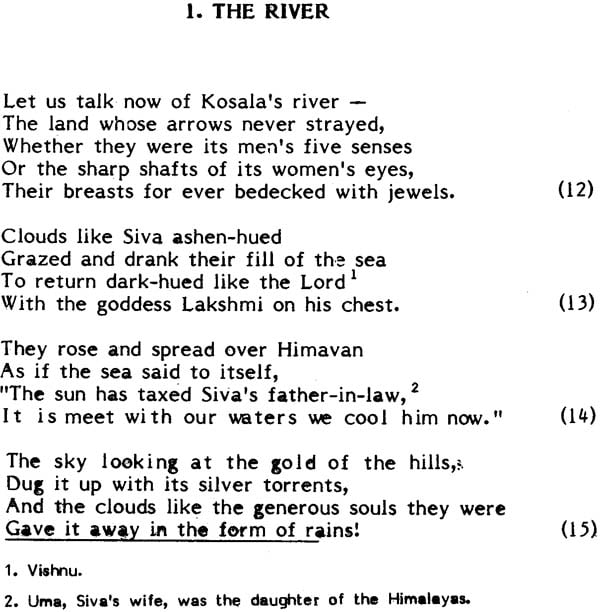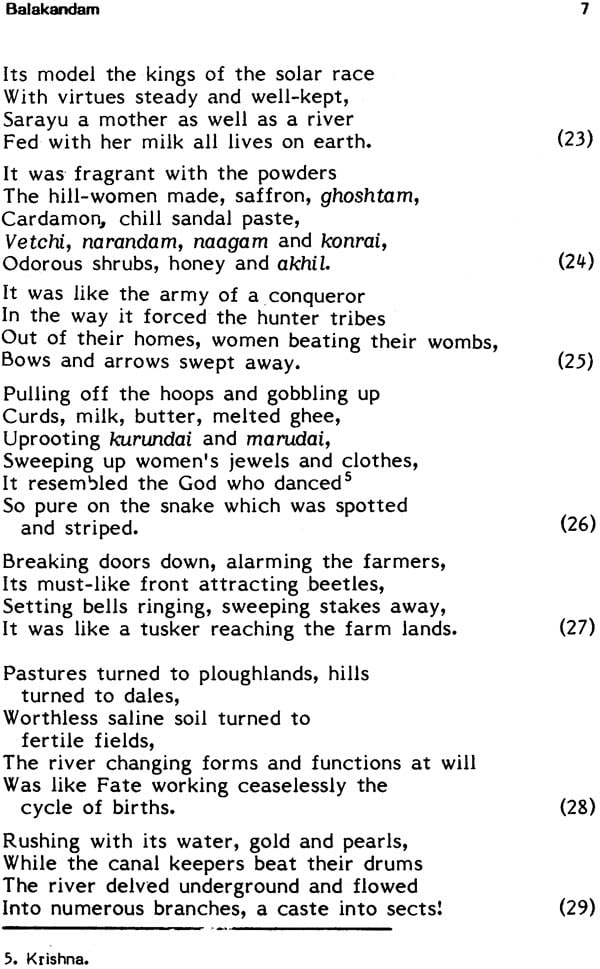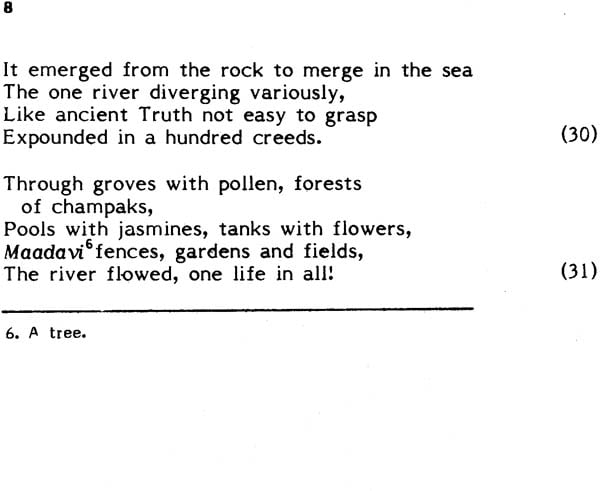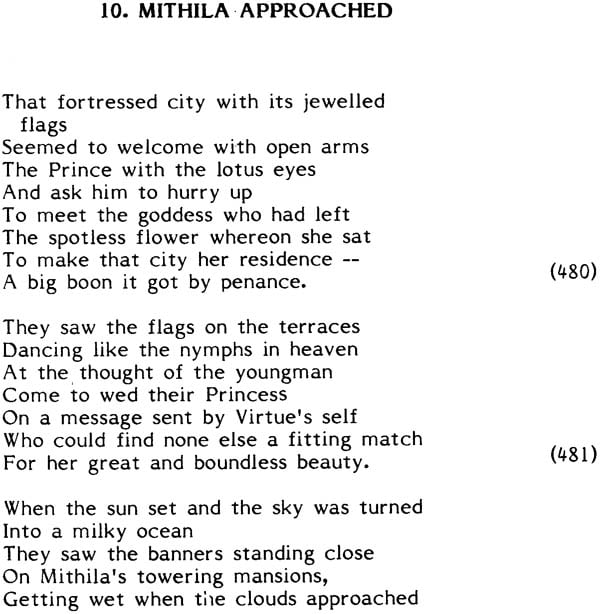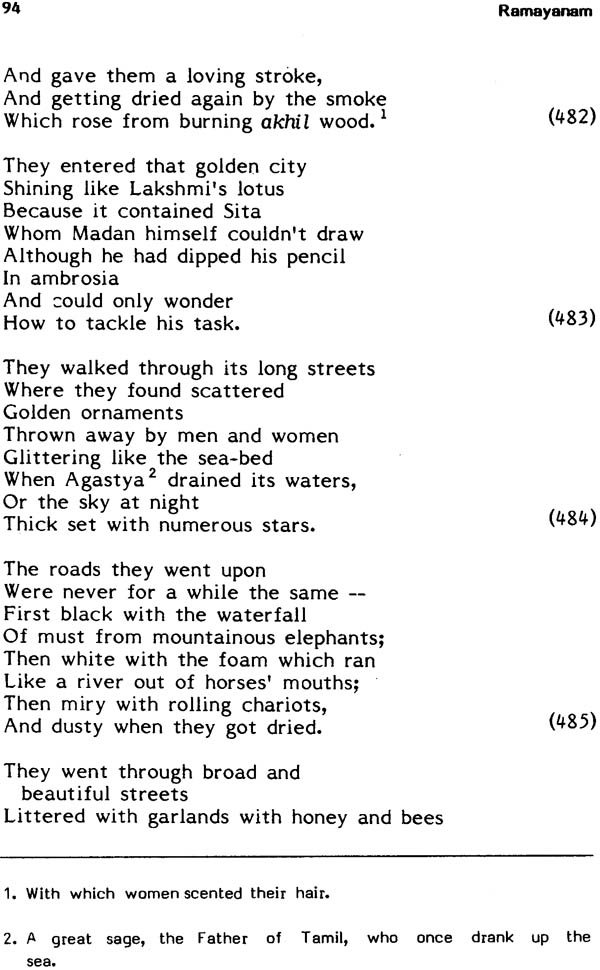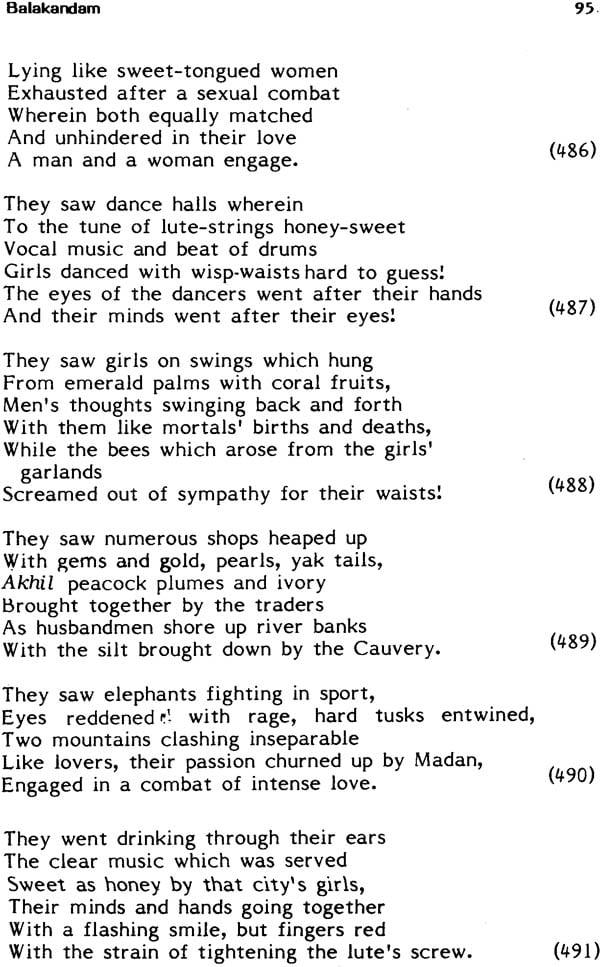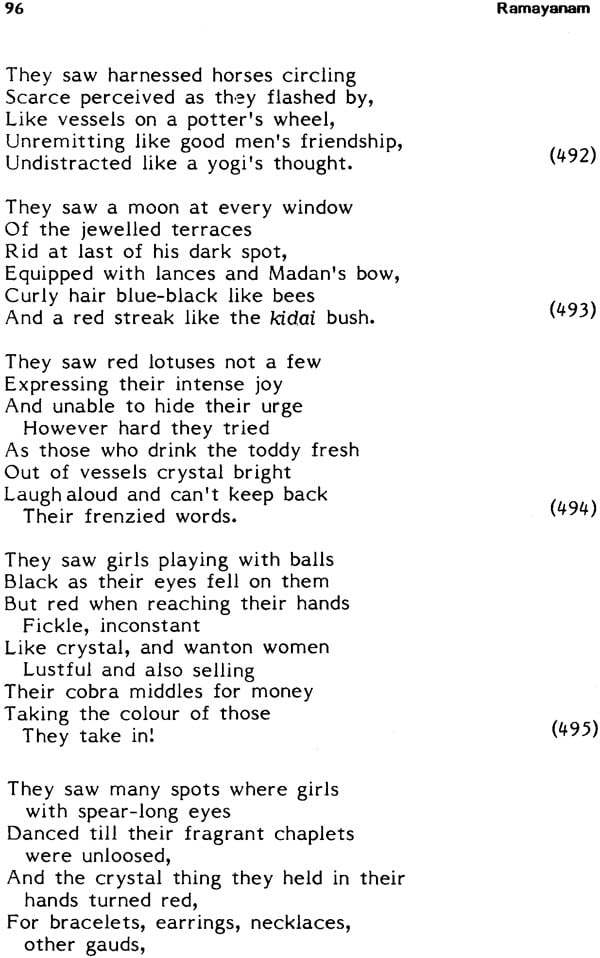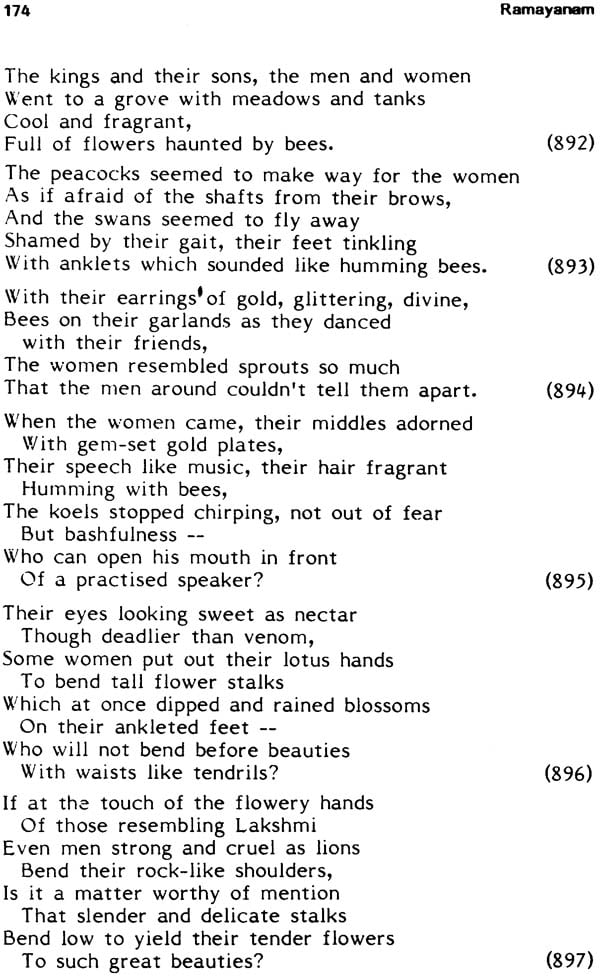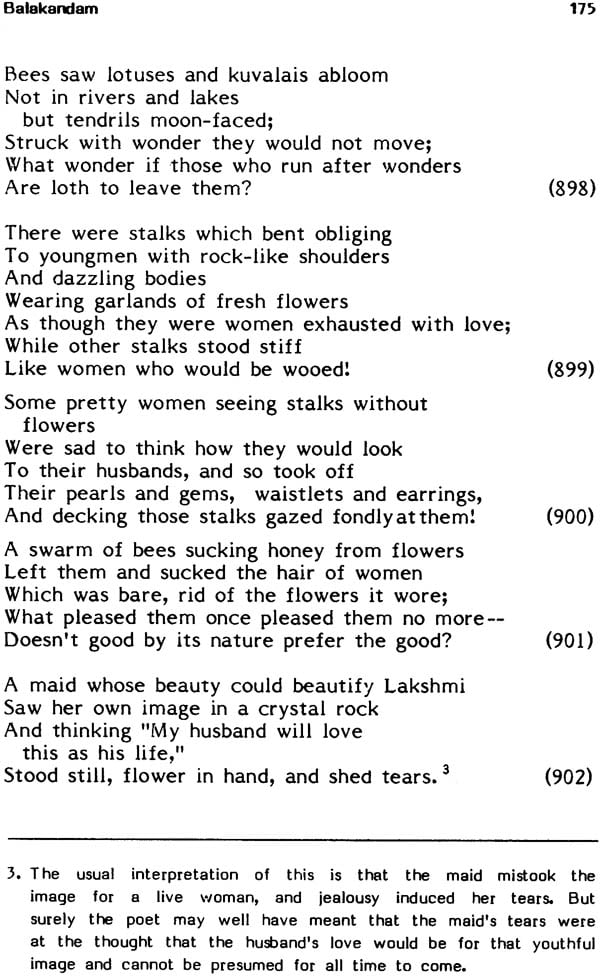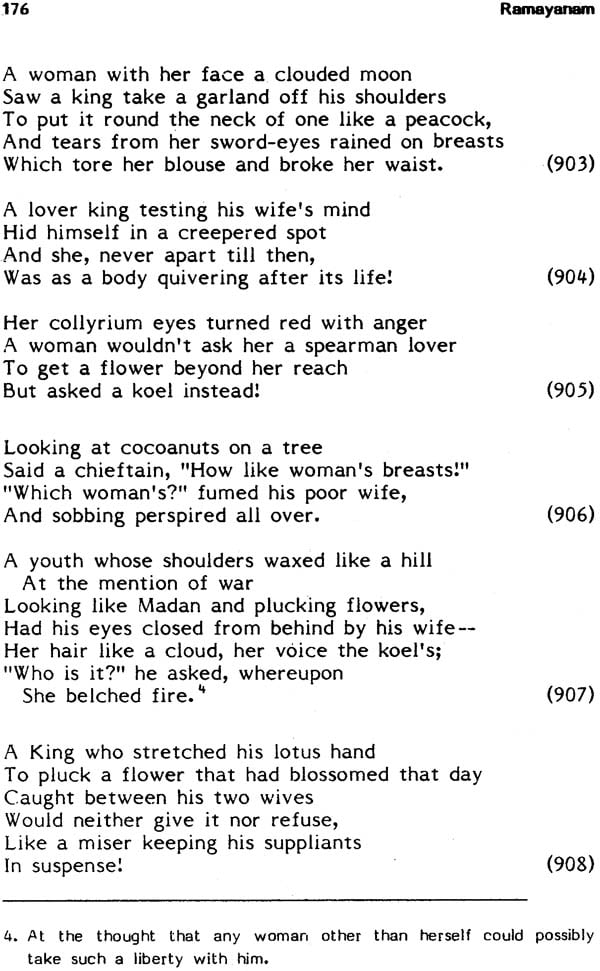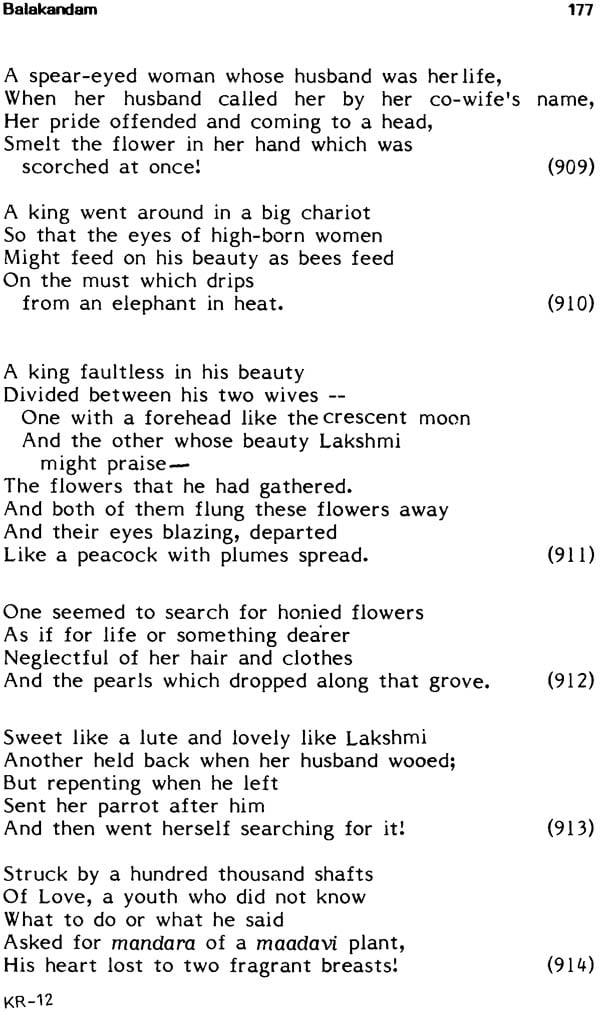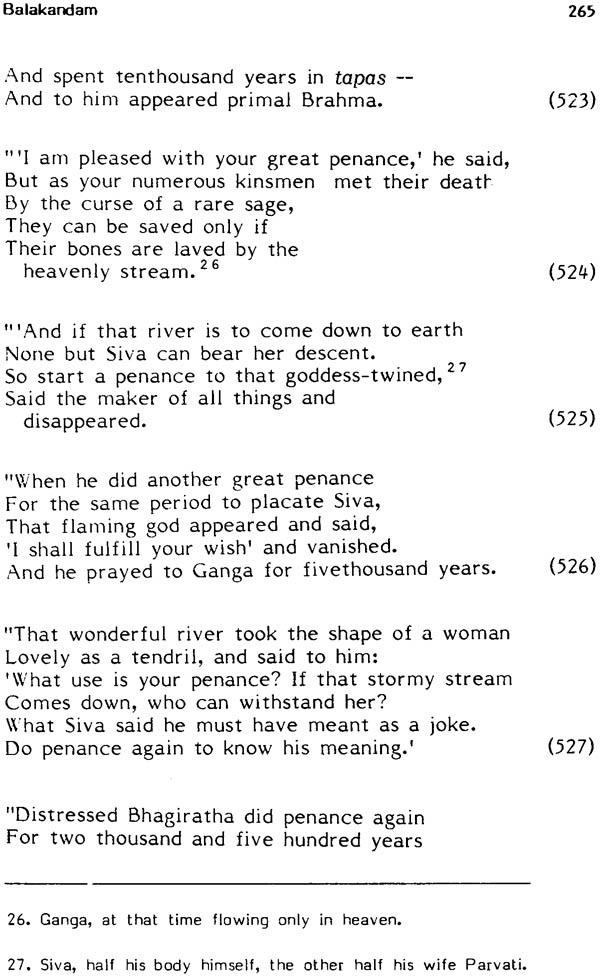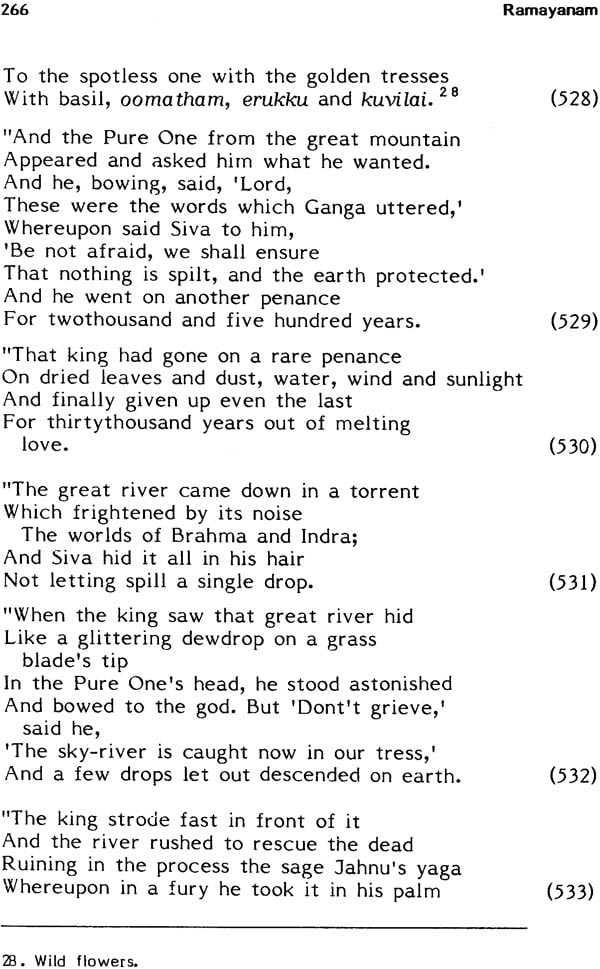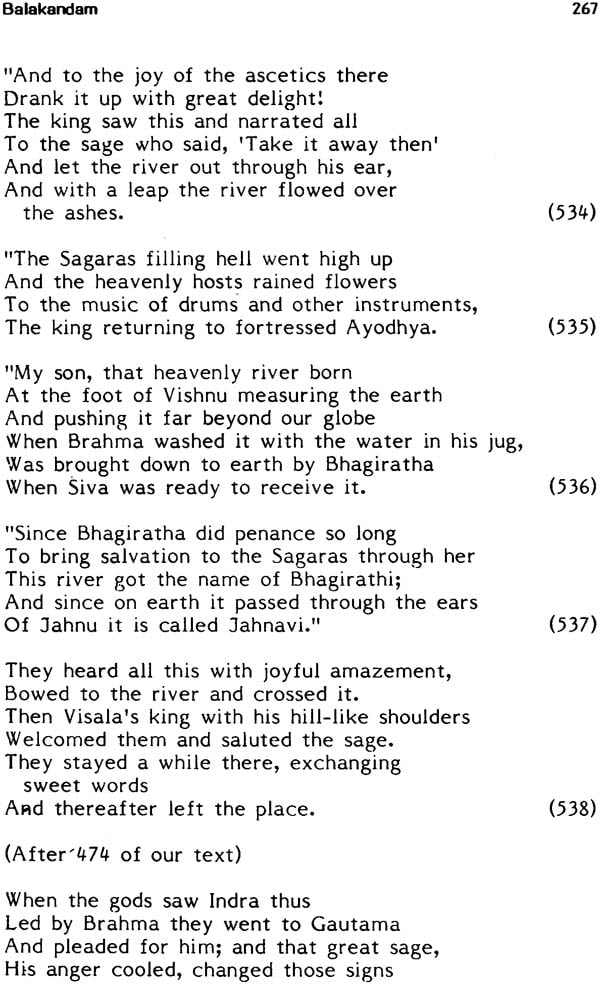
Kamba Ramayanam: Balakandam (An Old and Rare Book)
Book Specification
| Item Code: | NAM433 |
| Author: | P. S. Sundaram |
| Publisher: | Department of Tamil Development Culture, Tamil Nadu |
| Language: | English |
| Edition: | 1989 |
| Pages: | 300 |
| Cover: | Hardcover |
| Other Details | 8.5 inch X 5.5 inch |
| Weight | 360 gm |
Book Description
Many of the poetic works in Tamil can rank with the best anywhere in the world. However, the lovers of literature who do not know the language are denied the pleasure of enjoying these works. Perhaps, some Tamil knowing people themselves would need assistance to comprehend the full meaning of these works composed several centuries ago.
It was to meet these needs that the Government of Tamil Nadu launched an ambitious project in 1988 to bring out translations in English of selected Tamil classics. It was decided by the Committee of Experts I had appointed for this purpose that the translations should be in verse in order that the exquisite artistic appeal of the original may be brought out in adequate measure.
The Committee had set itself the rather difficult task of bringing out the first set of translations by Pongal 1989 and had taken enormous pains in selecting scholars and providing them the necessary guidance and help. I am very happy to find that translations of the 'Natrinai' and the 'Bala Kanda' of Kamban's Ramayana are ready for release and I wish to convey to the members of the Committee and the scholars who undertook this difficult task my heartfelt congratulations and thanks. They have indeed done a great service to Tamil literature.
I also wish to convey my congratulations and thanks to the Vice-Chancellor of the Tamil University, Thanjavur for his valuable efforts in bringing out these publications in a very short time. I am sure lovers of Tamil literature everywhere will find these works interesting and useful. I look forward to the opportunity of welcoming more and more such publications under the guidance of the Committee.
Subramania Bharati, the first and greatest of modern Tarnil poets, writing at a time when Tarnil in the place where it was spoken was despised by the Sanskri tists as fit only for everyday speech and not for high philosophy or as a vehicle for poetry, and the younger generation gave their heart to English as the language of progress rather than devote any time or thought to their mother-tongue, wrote proudly in Tamil:
Of all the poets we have known
There is none throughout the world
Like Kamban, Valluvar and Ilango --
Bare truth this, not a boast.
Bharati knew more than one language, and was not a chauvinist. These three Tarnil writers have indeed a place in world literature which only they can fill, and if the rest of the world is yet to see their greatness, that is due to no fault of theirs.
Of the three, Kamban is the latest. Sober scholarship is inclined to place his date at the close of the twelfth century after Nammalwar, the Vaishnavite saint-poet who probably belonged to the 9th century. There is a tradition that Kamban's father was a temple- drummer and that he belonged to that caste. But he was well-versed not only in the old Tamil classics like the Kural and the works of the Alwars but also in Sanskrit, and he certainly knew the Ramayana in Sanskrit which he took over to render into Tamil verse. The story goes that he listened to the Sanskrit Rarna- yana every night expounded by the Pandits, and composed in the course of the next day as many as seven hundred quatrains of his own work.
His patron was a Zamindar of Vennainal1ur, obviously a monied man, called Sadayan, whose name he mentions many times over with affection and gratitude in his lramavataram the name he gave to his Ramayana. As is usual Kamban introduces his work with an apology.
A milky ocean is Rama's lay
Which I, a cat, would fain lap up --
Refulgent, roaring, its huge waves
I am tackling now, by fond hope led.
I dare the scorn of all the world
And invite a stain by doing this
To show in their full majesty
Those spotless writers' splendid work --
The three that in the sacred tongue
T old this story, of whom I
The earliest as my model choose
To render into Tarnil song.
Valrniki is undoubtedly the one referred to here. Who are the other two? Is the author of the Adhyatma Ramayana from whom Tulsi Das derives his Ram Charit Manas one of them?
Ravana carrying Sita away without touching her, uprooting the hut in which she was, not found in Valmiki is common both to the Adhyatma Ramayana and Kamban. On the other hand, Rama asking Sita to enter fire before Ravana comes to seize her, so that it is the maya Sita that steps out of the fire who becomes Ravana's prisoner, and the real Sita changes place with her when she in turn enters the fire after Ravana's fall is a legerdemain found neither in Valmiki nor in Kamban, but both in the Adhyatma Ramayana and in the Ram Chant Manas.
It is evident that by the time Kamban wrote, the deification of Rama found already in Valmiki, had been raised much higher. But on the whole, Kam- ban, like Valmiki and unlike Tulsi Das, is attracted less by the religious appeal of the story than by its human.
This is not to say that he merely says in Tamil what Valmiki has already said in Sanskrit. On the one hand there are the usual conventions laid down by the post-Valmiki Sanskrit rhetoricians like Dandi whose poetics prescribed what an ideal epic should contain, like descriptions of the chief river, land, the city; and the conventions of Tamil poetry which he follows -- e.g. the primacy of love between a young hero and a nubile woman and the exaggerated languishings of separated lovers. On the other, he is also the product of his time, place and upbringin& - - as when he makes Rama say that he will have nothing to do with Sita after her year-long captivity under the Rakshasa King because during that t irue she could not have avoided a meat diet! Such thoughtless anachronisms need not detain us.
Given the characters and the situations already in the Adi Kavya what is it that makes Kamban unique? I would say, two things: first his sense of drama and secondly his extraordinary command of the Tamil language, and the beauty and dexterity of his use of it.
| Preface | ||
| Proem | 1 | |
| 1 | The River | 5 |
| 2 | The Land | 9 |
| 3 | The City | 21 |
| 4 | The King | 35 |
| 5 | The Divine Descent | 39 |
| 6 | The Handing Over | 61 |
| 7 | Tataka Killed | 67 |
| 8 | The Yaga | 77 |
| 9 | Ahalya | 87 |
| 10 | Mithila Approached | 93 |
| 11 | Ancestry Set Forth | 123 |
| 12 | The Bow | 131 |
| 13 | Dasaratha on the Move | 143 |
| 14 | Chandrasaila | 159 |
| 15 | The Mountain | 165 |
| 16 | Picking Flowers | 173 |
| 17 | Sporting in Water | 181 |
| 18 | Wine and Women | 189 |
| 19 | The Welcome | 201 |
| 20 | The Bridegroom's Para de | 207 |
| 21 | The Adorning of Sita | 217 |
| 22 | The Wedding | 227 |
| 23 | Parasurama | 243 |
| Appendix | 253 |
